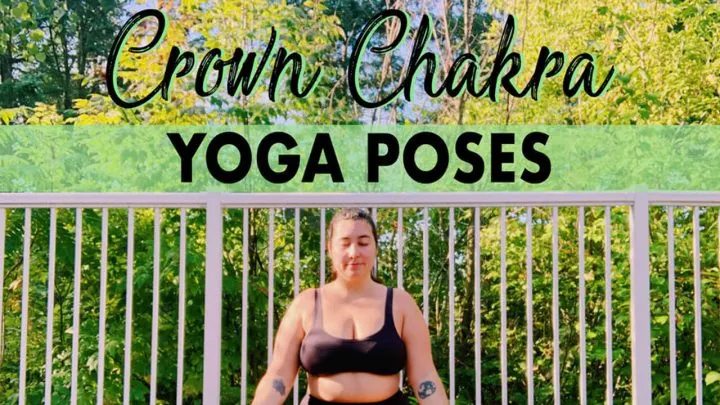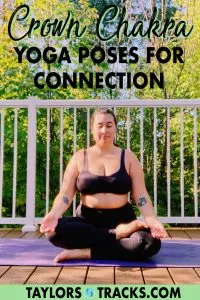It is believed that the crown chakra is where your soul enters your body at birth and where it leaves at death. This chakra is said to be the place where you connect to the Universe through consciousness energy. It’s there but you can’t see it, it’s what connects us all.
Having a fully balanced crown chakra is hard work, as when this chakra is balanced it means that you’ve achieved enlightenment which is the aim of yogis on their spiritual path. Thus, the crown chakra is not so much about finding the perfect balance but more so about aiming for balance.
When perfect balance is achieved you’re not really human anymore because you no longer suffer, as suffering is part of the human experience.
There are, however, things you can do to help you let go of some of the not so great emotions associated with this chakra and to open yourself up to wisdom, powerful energy and spiritual enlightenment.
Crown Chakra Basics
Location: Top of your head
Element: None
Colour: Violet (white)
Meaning: The crown chakra governs your connection, spirit and is connected to your consciousness. It is associated with the emotion of grief.
Other names: Seventh chakra, Sahasrara chakra
Translation: Thousand petaled
How Does Yoga Help Balance the Crown Chakra?
Balancing all of your chakras helps to balance your crown chakra because each chakra builds on the next, with each balanced chakra you’re helping the chakra above come into alignment and balance too.
Since yoga works on balancing all of the chakras and strengthening each, you’re working on your Sahasrara chakra too.
Yoga creates strength and awareness for each chakra and by building your awareness you’re becoming closer to enlightenment, your inner knowing and consciousness.
Yoga for Crown Chakra Sequence
Prefer something a little more zen? Try my crown chakra yin yoga sequence!
READ MORE: Crown Chakra Affirmations
Crown Chakra Poses for Deeper Connection
Balance the crown chakra with these postures that focus on balance, strength and letting go.
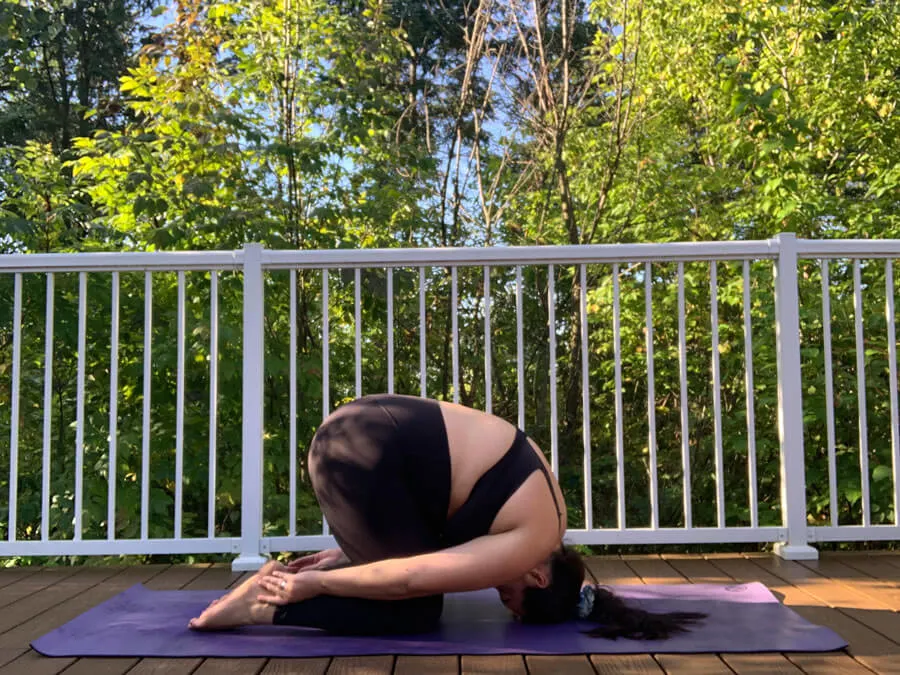
Rabbit Pose (Sasangasana)
Come to sit on your heels and shins. Sit with a straight spine. Reach your hands back and grab your ankles (as best you can if you have short arms!). Inhale to lengthen your spine, reach the crown of your head towards the sky. Exhale, curl your chin into your chest and then continue with the rest of your spine until the top of your head comes to rest on the mat. Inhale, lift your hips off of your heels, pushing your head gently into the mat as you push into your shins and top of your feet for balance. If your hands don’t reach your heels, hold onto wherever you can reach on your calves. Hold for 3-5 breaths.
To come out of the pose, reverse how you came into the pose.
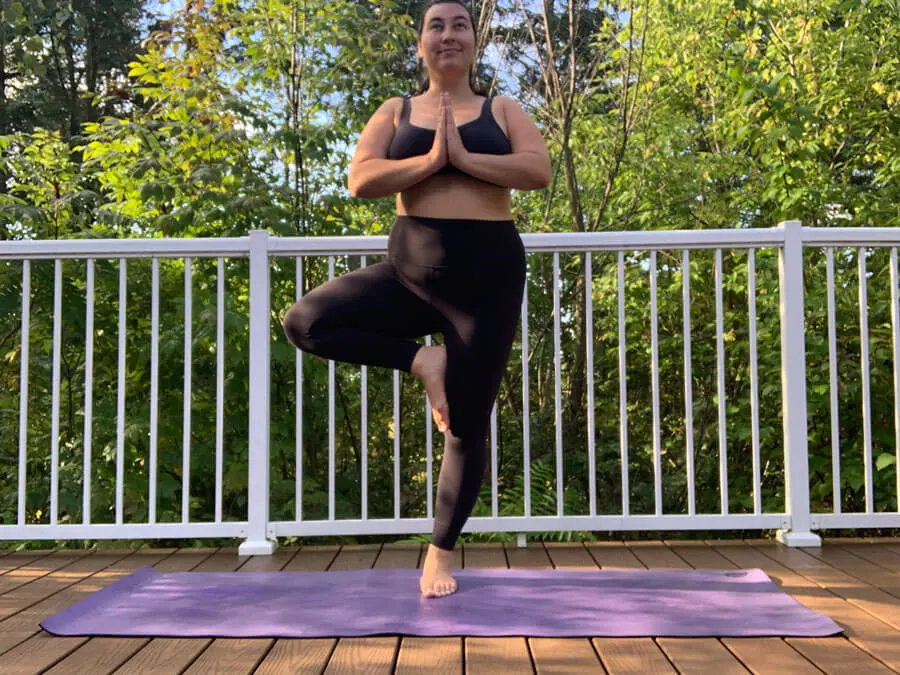
Tree Pose (Vrkasana)
Stand on your mat with your feet hip-distance apart and your toes pointing forward. Bring your hands to your hips. Inhale, bring your right knee up and forward, until it’s in line with your hip, exhale, open your leg to the side to open your hip and then place your foot on your inner left calf or thigh, avoid placing your foot on your knee.
Check to feel if your hips are even. Notice this by feeling if one hand is higher than the other. Bring your hands into prayer position. Have a slight micro bend in your left knee to avoid locking it. Inhale to lengthen your spine, reaching the crown of your head towards the sky while grounding your left foot into the mat. Imagine tree roots growing from your left foot for stability as you push into your left big toe.
Pull your belly button into your spine for support for your lower back. Pull your shoulders away from your ears and roll your shoulder blades down your back. Look directly in front of you and focus on one point for balance. For an extra challenge, try closing your eyes. Push your hands gently together. Breath deeply for 3-5 breaths. Repeat on the other side.
To come out of the pose, bring your knee back to in front of you and then place it back down on the ground.
Variations: Extend your arms above your head and use a mudra of your choice. Alternatively, bring your hands behind your back and your palms to touch in a reverse prayer. You can also place toes on the ground and allow your heel to rest lightly on your left ankle for a gentle variation that’s easy on the hips.
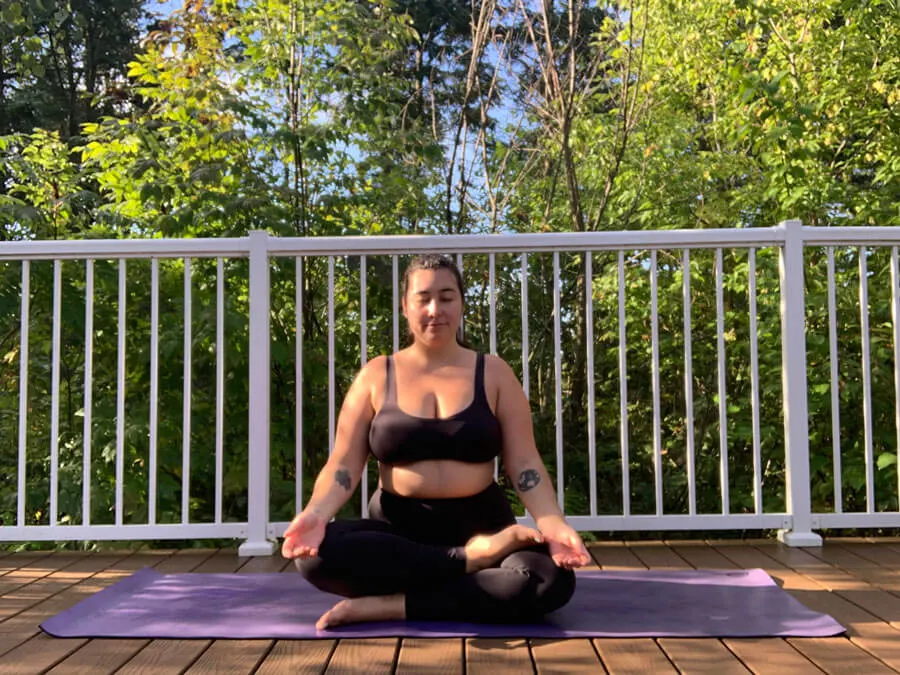
Half Lotus Pose (Ardha Padmasana)
Begin in a cross-legged position. Use your hands to bring your right foot up onto your left calf. If that feels okay then move your foot onto your thigh. If you could use a deeper stretch then bring your right foot into your left hip crease. If you can’t get to this position today, that’s fine, this pose takes time and practice.
Bring your hands onto your knees, face up or down. Close your eyes. Inhale, feel your spine elongate towards the sky, exhale to settle. Continue breathing deeply for 5-10 breaths. Switch sides and remember that one side may be more flexible than the other!
Variations: If the above variation doesn’t feel accessible try it while propping your hips up by sitting on a block or rolled blanket.
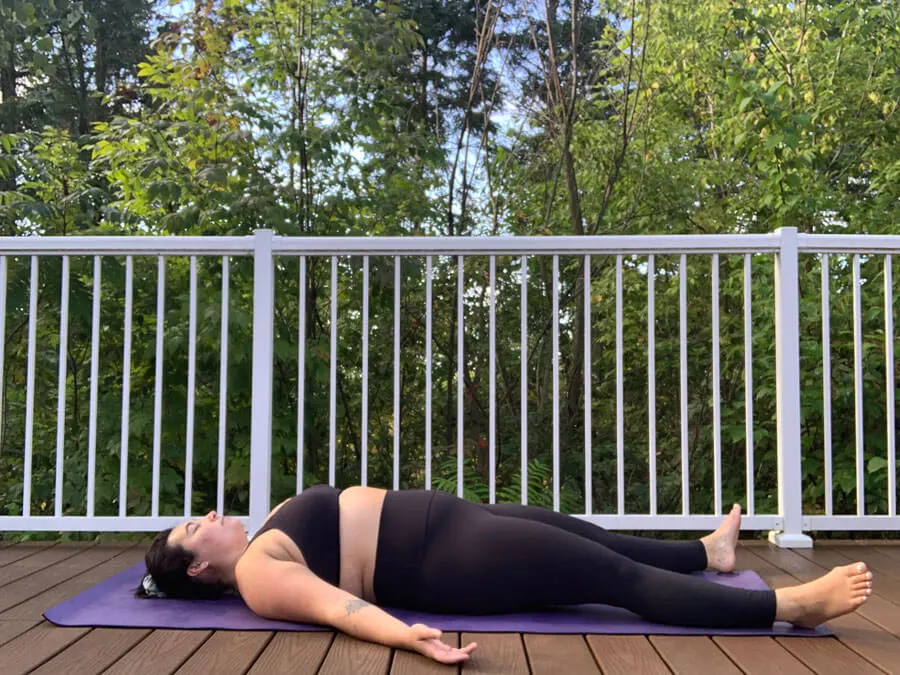
Corpse Pose (Savasana)
Come to lay on your back. Allow your arms to fall by your sides, bringing them out from your body so that you can feel a lot of space between your sides and your arms. Allow your arms to roll out so your palms face up. Relax your fingers. Bring your legs wide, your feet about mat width or further, whatever is comfortable for you.
Scoop your tailbone under enough so that your spine is long but your lower back has a natural arch. Sometimes it’s preferable to place a bolster, rolled blanket or a block under each knee to ease the lower back. Allow your entire body to relax. Feel your body melt into the mat. Bring your tongue to touch the backs of your upper teeth or the roof of your mouth and your lips to part to release any tension from your jaw.
Feel your eye sockets relax, your forehead relax, your shoulders let go, your chest open, your shoulder blades release into the mat. Allow your fingers to curl, your belly to completely disengage. Allow your thighs to roll you, your butt cheeks to soften, your hips to let go, your toes to fully relax.
Breathe deeply for 10-20 breaths or even longer if you need it!
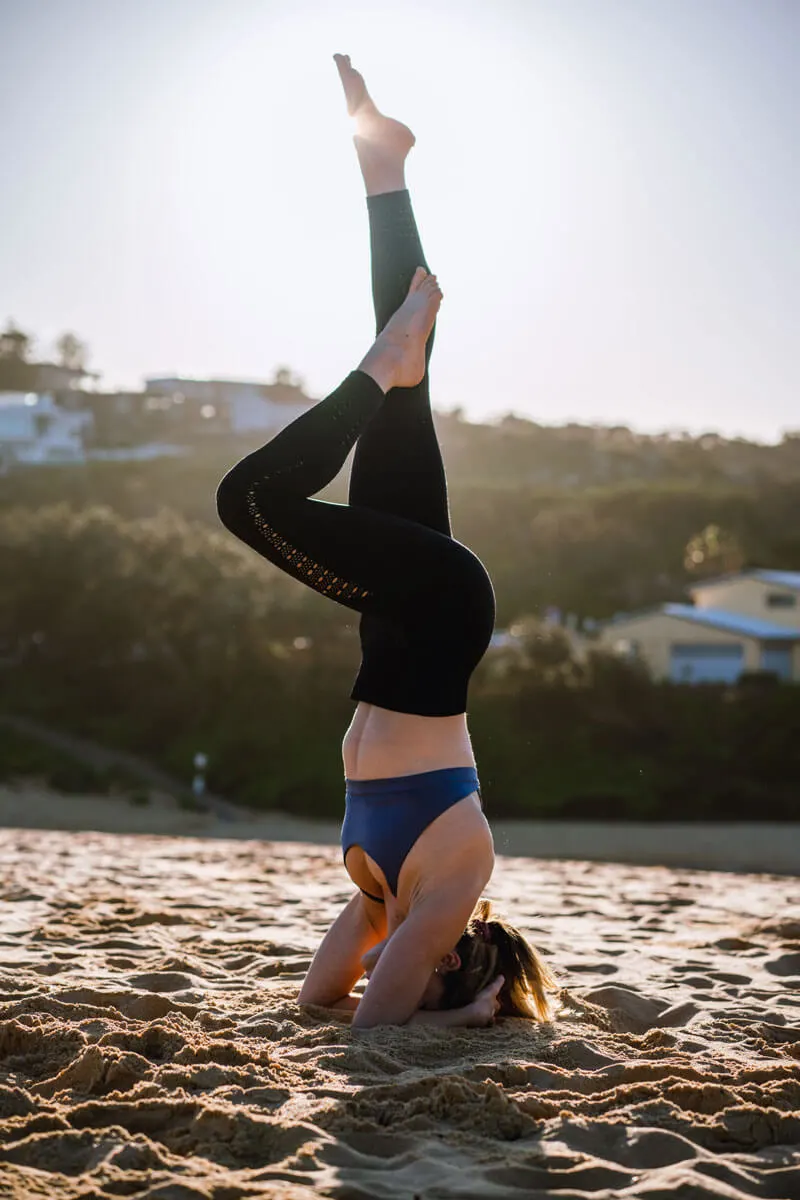
Headstand Pose (Salamba Sirsasana)
Begin on your hands and knees with your shoulders over your wrists and your hips over your knees. Come down onto your elbows and grab for opposite elbows with opposite hands to ensure that your arms are a safe distance together to support you. Keeping your elbows where they are, interlace your fingers and spread your palms apart so that it creates a hammock for your head.
Lean forward and place your head between your hands, bringing the crown of your head to the mat. Your hands are supporting the back of your head. Curl your toes and bring your hips high into the sky like you would in downward dog and dolphin. Push into your forearms, edges of your hands and elbows so that your weight is in your arms.
Walk your feet towards your face until your back comes perpendicular to your mat, your tailbone pointing towards the sky and your hips are stacked over your shoulders. Using your core strength, lift one of your legs up so that it’s in line with your spine, using the momentum of one leg lifting to help lift the other.
Continue to push into your arms to avoid putting too much weight in your head and strain on your neck. Breathe deeply.
If coming into headstand with straight legs is challenging to balance, opt to start with lifting one leg off of the mat by bending your knee and bring your heel to touch your bum. Follow with the other leg and stay there with your legs tucked or extend your legs from there. Remember to keep your core engage the entire time and your shoulders away from your ears.
To come out reverse how you got into headstand and take a few breaths in child’s pose before bringing your head above your shoulders.
Try adding these crown chakra postures into your yoga practice to challenge your balance and open your connection to yourself and your spirituality.

